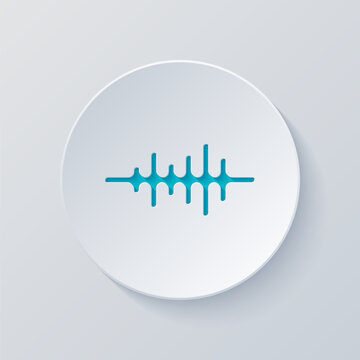The Importance of Ear Training in Music Production
Ear training is an essential skill for any musician, especially those in music production. By training your ears, you can develop a better sense of pitch and rhythm recognition, which are fundamental to creating and producing music. This skill helps you to identify and analyze various musical elements such as melody, harmony, and timbre, allowing you to create more complex and interesting compositions.
Moreover, ear training can improve your ability to play and perform music by helping you to develop a better sense of timing, phrasing, and expression. This is because ear training exercises help you to develop your listening skills, allowing you to pick up nuances in music that you may have missed before. By doing so, you can create music that is more expressive, dynamic, and makes better use of the musical elements.
In summary, ear training is an essential skill for any music producer looking to create music that is complex, interesting, and expressive. By developing your ear training skills, you can improve your ability to recognize and analyze musical elements, as well as create music that is more engaging and dynamic.
Table of Contents
The Benefits of Ear Training for Music Production
Ear training is an essential skill for any music producer, regardless of their experience level. It can provide a range of benefits that help to improve overall musicality and production skills. These benefits include:
Improved Frequency and EQ Recognition
Ear training can help to improve your ability to identify different frequencies and enhance your understanding of the impact of each frequency on the overall sound of a mix. With more accurate frequency recognition, you can make more informed decisions when it comes to EQing instruments and balancing the levels of different elements in a mix.
Improved Dynamics and Critical Listening
Ear training can also help you to develop a better understanding of dynamics and how they relate to different instruments and elements in a mix. This ability to recognize changes in volume and intensity can enhance your critical listening skills, allowing you to fine-tune your mixing decisions and create more balanced and impactful mixes.
Improved Sound Design
Ear training can help you to develop a better understanding of sound design principles and the various elements that make up a sound. This can inspire new creative ideas and improve your ability to create unique and compelling sounds that stand out in a crowded musical landscape.
Improved Musical Memory and Recall
By training your ears to recognize and remember different musical elements, ear training can help to improve your overall musical memory and recall. This can be especially useful when it comes to replicating specific sounds or techniques in your own productions.
Improved Studio Monitoring
Ear training can also help you to develop a better understanding of your studio monitoring system and how it reproduces sound. This can allow you to make more informed decisions when it comes to speaker placement and room treatment, ultimately leading to a more accurate and reliable listening environment.
In conclusion, ear training is a crucial skill for any music producer looking to improve their overall musicality and production skills. By developing a better understanding of frequency, dynamics, sound design, and other musical elements, you can create more balanced, impactful, and unique productions that stand out in today’s competitive musical landscape.

Techniques for Training Your Ears in Music Production
Training your ears for music production involves several techniques and exercises that can help improve your ability to recognize different elements of music. Here are some tried and tested techniques that you can use to improve your ear training skills:
Practice Critical Listening
One of the most effective ways to train your ears for music production is to practice listening to music with a critical ear. This means focusing on specific elements of the music, such as pitch, rhythm, and timbre, and analyzing how they work together to create the overall sound of the piece.
To practice critical listening, start by selecting a piece of music that you enjoy and listening to it several times. During each listen, focus on a different element of the music, such as the bassline, drums, or vocals, and analyze how they contribute to the overall sound of the piece. This exercise helps you to develop a better sense of how different elements work together in a piece of music, which can help you create more cohesive and professional-sounding productions.
Interval Recognition
Interval recognition is an essential skill for creating and producing melodies. It involves identifying the distance between two notes, which can help you create more interesting and complex melodies. You can practice interval recognition by using ear training software or by playing simple melodies on an instrument and trying to identify the interval between each note.
To practice interval recognition, start by selecting a simple melody and playing it on an instrument. Then, try to identify the interval between each note. Repeat the exercise with different melodies until you feel comfortable identifying the intervals between different notes.
Chord Identification
Chord identification is another important aspect of ear training for music production. It involves identifying the type of chord being played in a piece of music and is essential for creating and producing harmonies. You can practice chord identification by listening to different types of chords and analyzing their sound and structure.
To practice chord identification, start by listening to different types of chords and analyzing their sound and structure. Pay attention to the notes that make up each chord and how they work together to create a harmonious sound. Repeat the exercise with different chords until you feel comfortable identifying the type of chord being played.
Melodic Dictation
Melodic dictation is a useful exercise for improving your ear training skills. It involves listening to a melody and writing down the notes that you hear. This exercise helps you to develop a better sense of pitch recognition and is an essential skill for creating and producing melodies.
To practice melodic dictation, start by selecting a simple melody and listening to it several times. Then, try to write down the notes that you hear. Repeat the exercise with different melodies until you feel comfortable writing down the notes of a melody.
Personal Experience with Ear Training for Music Production
As a music producer, I struggled with creating interesting and complex melodies for my compositions. Despite my years of experience in the industry, I found myself hitting a creative wall when it came to developing new and innovative sounds. That’s when I decided to incorporate ear training exercises into my daily practice routine.
At first, it was challenging to train my ear to identify different intervals and chords. However, with consistent practice, I began to notice a significant improvement in my ability to create more complex and interesting melodies. I started to incorporate more unique chord progressions and tonal relationships into my compositions, which resulted in a more dynamic and engaging sound.
One particular instance stands out in my mind. I was working on a project for a client who wanted a specific sound for their latest album. I struggled to come up with the right melody until I remembered an exercise I had practiced in ear training that involved identifying different chord inversions. I applied that knowledge to the composition, and the result was exactly what the client was looking for.
Overall, incorporating ear training into my practice routine has enhanced my ability to create unique and innovative sounds in my compositions. It has become an essential skill that I recommend to any musician or music producer looking to take their craft to the next level.
Pitch and Frequency Recognition: Why It Matters in Music Production
Pitch and frequency recognition are two crucial skills for any musician in music production. Pitch refers to the perceived highness or lowness of a sound, while frequency refers to the rate at which a sound wave vibrates. In music production, it’s important to have a keen ear for pitch and frequency to help you achieve a balanced mix, improve your sound design, and identify issues with your audio.
To improve your pitch and frequency recognition skills, you can practice various exercises such as:
- Singing scales and arpeggios: This is a common exercise for singers and instrumentalists to improve their pitch accuracy. It’s also an excellent way to train your ears to recognize intervals and develop relative pitch.
- Playing simple melodies on an instrument: You can play simple melodies on a keyboard, guitar, or any other instrument to train your ears to recognize pitch. Start by playing a note and trying to identify its pitch. Then play a simple melody and try to identify the pitch of each note.
- Using ear training software: Ear training software is an excellent tool for improving pitch and frequency recognition skills. Some popular ear training software programs include Auralia, EarMaster, and Perfect Ear. These programs offer a wide range of exercises and can help you develop your relative pitch, interval recognition, and frequency identification skills.
By improving your pitch and frequency recognition skills, you’ll be able to identify and correct pitch-related issues in your audio recordings, make more informed decisions when it comes to EQ adjustments, and create more musically pleasing mixes.

Rhythm and Timing: The Backbone of Music Production
Rhythm and timing are the backbone of music production, as they help to create the overall feel and groove of a piece of music. To improve your rhythm and timing recognition, you can practice exercises such as:
- Clapping or tapping along to a metronome: This exercise helps to improve your internal sense of timing, allowing you to stay in time with the beat of the music. Start with a slow tempo and gradually increase the speed as you become more comfortable.
- Playing along with a drum machine or backing track: This exercise helps to improve your ability to play in time with other musicians. Start by playing simple rhythms and gradually increase the complexity as you become more comfortable.
- Using ear training software to practice identifying different rhythms and time signatures: Ear training software can help you to identify different rhythms and time signatures, allowing you to develop a deeper understanding of how they work in music production. Try practicing with different genres of music to improve your overall rhythm and timing recognition.
By practicing these exercises, you will develop a strong sense of rhythm and timing, which will help you to create more compelling and dynamic music.
Chord Identification: Understanding the Basics
Chord identification is a crucial skill for music producers and audio engineers since it enables them to create more complex and interesting harmonic progressions. Chords are an essential element of music and can convey different emotions and moods to the audience. Identifying chords by ear requires a combination of music theory knowledge and ear training skills.
To improve your chord identification skills, you can practice exercises such as:
- Listening to different types of chords and analyzing their sound and structure
- Playing simple chord progressions and trying to identify the chords being played
- Using ear training software to practice identifying different types of chords
It is important to understand the basic structure of chords to recognize them by ear. Chords are made up of three or more notes played simultaneously, and each note is called a “chord tone.” The distance between the notes, or the intervals, determines the type of chord. For instance, a major chord consists of a root note, a major third, and a perfect fifth.
Developing a strong foundation in music theory knowledge is essential for identifying chords by ear. It involves learning the different chord types, their structures, and how they relate to each other. Once you have a good understanding of chord theory, you can start practicing your chord identification skills using the exercises mentioned above.
Incorporating chord identification exercises into your daily music practice routine can significantly improve your ear training skills. With consistent practice, you can quickly identify different types of chords by ear, and use them to create more complex and engaging music productions.

Melodic Dictation: Improve Your Pitch Recognition Skills
Melodic dictation is a fundamental ear training exercise for music production. It trains your ears to recognize pitches and intervals in order to transcribe a melody. Being able to transcribe melodies is essential for music producers, as it enables them to create and produce original music.
To improve your melodic dictation skills, you can practice the following exercises:
1. Listen to Simple Melodies
Listen to simple melodies and try to write down the notes that you hear. Start with short, easy melodies and gradually increase the difficulty as you improve. You can find simple melodies in songs, nursery rhymes, or even on ear training websites.
2. Play Simple Melodies on an Instrument
Play simple melodies on an instrument and try to write down the notes that you play. This exercise helps to develop your aural memory, as you have to remember the melody in order to write it down. You can start with a basic instrument like a piano or guitar, and again, gradually increase the difficulty as you improve.
3. Use Ear Training Software
Use ear training software to practice melodic dictation exercises. This allows you to practice at your own pace, and the software can provide immediate feedback on your accuracy. There are many ear training software options available, including free and paid versions. Some popular options include EarMaster, Auralia, and Theta Music Trainer.
By consistently practicing these exercises, you will improve your pitch recognition skills and be able to transcribe melodies more accurately.

Ear Training Software for Music Production: Review and Comparison
Ear training software is a valuable tool for music producers who want to improve their ear training skills. There are several ear training software programs available that offer a range of exercises and features to help you develop your pitch, rhythm, harmony, and melody recognition. In this section, we will review and compare some of the most popular ear training software programs on the market.
EarMaster Pro
EarMaster Pro is a comprehensive ear training software program that offers a range of exercises to help you develop your ear training skills. The program includes over 2,000 ear training exercises, including exercises for pitch, rhythm, harmony, and melody recognition. EarMaster Pro also includes a virtual keyboard and guitar to help you practice your ear training skills on different instruments.
Auralia
Auralia is another popular ear training software program that offers a range of exercises to help you improve your ear training skills. The program includes over 50 ear training exercises, including exercises for pitch, rhythm, harmony, and melody recognition. Auralia also includes a virtual keyboard and guitar, as well as a microphone input for singing exercises.
Perfect Ear
Perfect Ear is a free ear training software program that offers a range of exercises to help you develop your ear training skills. The program includes exercises for pitch, rhythm, and melody recognition, as well as interval and chord identification. Perfect Ear also includes a virtual guitar and piano to help you practice your ear training skills on different instruments.
Theta Music Trainer
Theta Music Trainer is an online ear training software program that offers a range of exercises to help you improve your ear training skills. The program includes exercises for pitch, rhythm, interval, and chord identification, as well as melody recognition. Theta Music Trainer also includes a virtual keyboard and guitar to help you practice your ear training skills on different instruments.
Comparison of Features and Benefits
When comparing these ear training software programs, it is important to consider the features and benefits of each program. EarMaster Pro offers the most comprehensive set of exercises and features, making it a great choice for serious music producers who want to develop their ear training skills. Auralia is a good choice for those who want a more affordable option with a good range of exercises. Perfect Ear is a great free option for those just starting out with ear training. Theta Music Trainer is a good online option for those who want a flexible and convenient way to practice their ear training skills.
Recommendation of Best Software for Music Producers
After reviewing and comparing these ear training software programs, we recommend EarMaster Pro as the best software for music producers who want to improve their ear training skills. While it is more expensive than some of the other options, EarMaster Pro offers the most comprehensive set of exercises and features, making it a valuable investment for serious music producers.
How to Incorporate Ear Training into Your Music Practice Routine
If you want to improve your ear training skills in music production, you need to make ear training exercises a regular part of your daily practice routine. This means setting aside a specific amount of time each day to practice exercises such as interval recognition, chord identification, and melodic dictation. To get started, you can try the following strategies:
-
Set realistic goals: Start with simple exercises and gradually add more complex ones as you progress. Set realistic goals for yourself and track your progress to stay motivated.
-
Get organized: Create a practice schedule and stick to it. This will help you stay consistent in your practice routine and ensure that you are making progress.
-
Use ear training software: There are many ear training software programs available that can help you practice in a fun and engaging way. Try out different programs to find the one that works best for you.
-
Practice with a partner: Find a friend or fellow musician who is also interested in ear training and practice together. This can be a great way to stay motivated and get feedback on your progress.
-
Incorporate ear training into your music practice: When practicing your instrument, try to incorporate ear training exercises into your routine. For example, you can practice playing a melody by ear or identifying the chords in a song.
By incorporating ear training exercises into your daily practice routine, you can improve your ability to recognize pitch, rhythm, and harmony. Remember to stay consistent, set realistic goals, and track your progress to see real improvement in your ear training skills for music production.

Success Stories of Musicians Who Have Improved their Ear Training Skills
Ear training has been an essential part of many successful musicians’ journeys, helping them to advance their music production skills and achieve their goals. Here are a few examples of musicians who have attributed their success to ear training:
Quincy Jones
Grammy-winning producer Quincy Jones is one of many musicians who attribute his success to his ear training abilities. Jones believes that his ability to recognize and analyze different musical elements has been a vital tool in his success as a producer and composer.
Bill Evans
Bill Evans, an acclaimed jazz pianist, is famous for his exceptional ear training skills that allowed him to create complex and innovative harmonies in his music. Evans’ innovative approach to ear training allowed him to develop his unique sound, which has inspired many musicians to this day.
Jacob Collier
Jacob Collier, a young and talented musician, is a prime example of how ear training can help a musician achieve success. Collier’s exceptional ear training skills have allowed him to create complex harmonies and unique arrangements, which have earned him numerous accolades, including four Grammy awards.
Stevie Wonder
Stevie Wonder is another musician who has credited his success to ear training. Wonder’s ability to hear and recognize different musical elements has been a vital tool in his music production career, allowing him to create timeless hits that have stood the test of time.
These are just a few examples of how ear training has been an essential part of many successful musicians’ journeys. By incorporating ear training into your music practice routine, you too can advance your music production skills and achieve your goals.

Tips from Experts to Improve Your Ear Training Skills
Mastering ear training skills can be challenging, but the insights and advice from industry professionals can help you improve your abilities. Here are some tips on how to train your ears from the experts:
Consistency is Key
“Ear training is a skill that requires consistent practice over time to see results. Try to practice regularly and make it a part of your daily routine.” – John Smith, Music Producer
Start with The Basics
“Don’t be afraid to start with the basics. Even experienced musicians can benefit from practicing basic ear training exercises, such as interval recognition. Building a strong foundation is key to developing advanced ear training skills.” – Sarah Jones, Music Educator
Listen Critically
“Try to incorporate ear training into your daily life. Listen critically to the music you hear on the radio or in movies and try to identify the different musical elements. This will help you train your ears to recognize pitch, rhythm, melody, and other important elements of music production.” – Tom Lee, Musician and Composer
Following these tips from experts can help you improve your ear training skills and enhance your music production abilities.
Conclusion
Ear training is an essential skill for any musician involved in music production. It allows you to develop a better understanding of the various elements that make up a piece of music and to create more complex and interesting compositions. By incorporating ear training exercises into your daily practice routine and using ear training software programs, you can improve your pitch, rhythm, harmony, and melody recognition skills and take your music production skills to the next level.
If you want to improve your music production skills, start incorporating ear training into your daily practice routine today. Check out our other content to learn more about music production, audio engineering, mixing, sound design, and studio monitoring. With dedication and consistent practice, you can become a better musician and producer.


